As a coach and analyst who’s spent 12+ years teaching kids and adults why spacing beats hero-ball, here’s my quick take: if you want clean, smart play, you need to pick the right shape and teach it well. And yes, I mean actual shapes, not “everyone chase the ball.” When folks ask me about 9v9 soccer formations, I tell them this: pick one that fits your players, not your ego. That’s the trick in youth soccer and small-sided games.
Fast answer, because you’re busy and I respect that: if you want balance and width, go 3-2-3. Want more midfield control and safety? 3-3-2. Want pressing and goals from wide zones? 2-3-3. Want a mini-bus with counters? 4-3-1. Simple. Not easy. But simple.
If you’re scouting and want to see how your region stacks up before choosing a shape, I browse updated team rankings to spot trends. Helps me read the room before I set traps on a Saturday morning.
What Actually Makes a Formation Work in 9v9 Soccer

Formations don’t win games. People do. Still, the right structure makes average players look smart. The big rocks: width (stretch them), depth (give your 6 an out ball), and triangles (so the kid on the ball has two easy passes, always). If you can also teach a first-time layoff and a switch of play, you’re already ahead of most sideline screamers.
If you want the textbook view of what a “formation” even is (beyond my rants), the nerd-approved summary lives here: formation in association football. It’s dry. It’s also right.
And because 9-a-side is part of youth development, not the final destination, the context of small-sided games matters. Fewer players = more touches = faster learning. If I had a dollar for every winger who learned to defend in these formats, I’d have… well, several dollars.
9v9 Soccer Formations Explained (and What I Actually Run)
3-2-3: The balanced grown-up
I reach for 3-2-3 when I want width and simple build-up. Three in the back give stability. Two central mids (often a 6 and an 8) create a double pivot. The wide forwards pin fullbacks, and the 9 stays honest between center-backs. The build: center-back splits, 6 drops to receive, wingbacks step, then we bounce and switch. It’s tidy. It’s also forgiving when your left center-back thinks he’s Jack Grealish. Spoiler: he is not.
3-3-2: Training wheels that actually roll
I’ve always found that 3-3-2 suits squads still finding their spacing. You get six behind the ball in rest defense, but you can still press with three in the middle. The front two love to split and attack channels. The trade-off: wide overloads are harder to create unless your outside mids push. Great for teaching defensive shape and transition defense without turning every goal kick into roulette.
2-3-3: Press-and-pounce
When I smell blood (or slow center-backs), I go 2-3-3 and set pressing traps in wide zones. Two center-backs, tight and aggressive. Three in midfield sliding across as a unit. Front three lock angles and jump on bad touches. You can concede counters if your 6 naps, but the goals are fun. Chaos, but the organized kind.
4-3-1: The bunker-and-bite
Look, I don’t love parking anything, but 4-3-1 can be smart in tournaments when legs are jelly. Four in the back to close gaps. Three in midfield for screens and second balls. The 10 sits under the striker and waits for that one slip pass. Against better teams, this buys you time and sanity. Against weaker ones, it’s overkill and slows development. Pick your battles.
I break down games with freeze-frames and way too many arrows, and I stash those in my weekly match analysis notes. Helps players see the “why,” not just hear me shout “switch!” like a broken car alarm.
Quick Comparison: Strengths, Risks, and Ideal Teams
| Shape | Main Idea | Strengths | Risks | Best For |
|---|---|---|---|---|
| 3-2-3 | Balanced width + simple build-up | Stable back line, easy outlets, good for switches | Gaps if wingbacks don’t recover | Teams learning build-up play |
| 3-3-2 | Safety first, control the middle | Solid rest defense, simple roles | Less natural width up high | Developing squads, new groups |
| 2-3-3 | High press, win it wide | Chance creation, energy, fun | Counter risk if 6 is late | Athletic teams who love pressing |
| 4-3-1 | Compact block, fast counters | Hard to break down, clean lanes | Can stunt width and creativity | Fatigue days, tough opponents |
How to Coach the Build-Up Phase in 9v9 Soccer
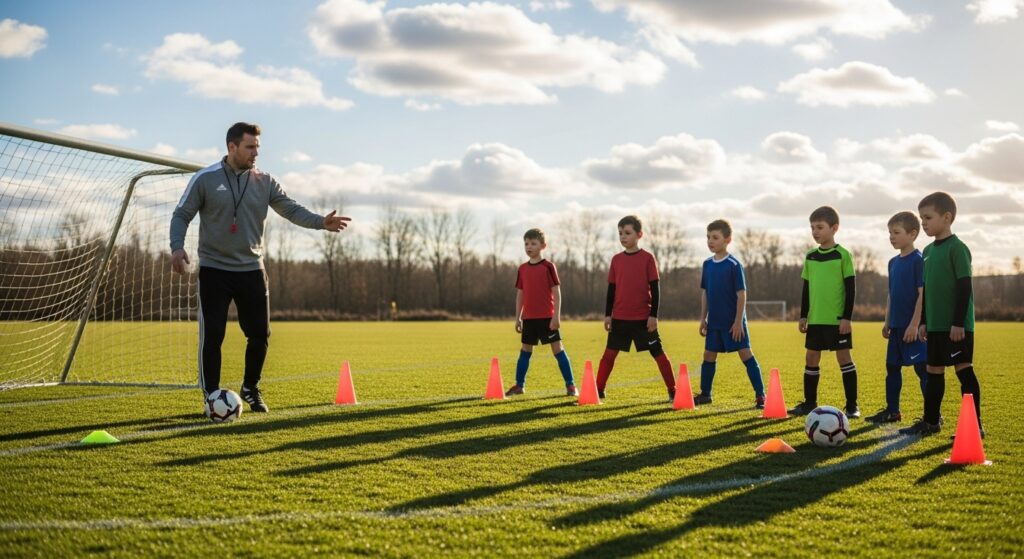
What I think is: teach patterns, not scripts. From a goal kick, my cues are simple. Center-backs split. 6 shows, then spins out to create a new angle. Fullbacks step to half-spaces, not the touchline. The 10 checks between lines. If we can’t play short, we go long… on purpose… with runners ready for the second ball. And yes, I do let the keeper play to the weak side. Shocking, I know.
When my kids jump to 11v11, the habits carry over smoothly into a width-control shape like this 4-2-3-1 formation. Same principles. More moving parts.
Pressing and Rest Defense: Winning Games Without the Ball
My rule: if we attack with five, we defend with four behind the ball. That’s rest defense. In 2-3-3, the weak-side winger tucks in to close the switch. In 3-2-3, the 8 shades to the ball side to cut the lane into their pivot. Pressing triggers? Bad first touch, back to goal, and throw-ins near their corner. We step on those. And we step together. If you send only one kid, you’re not pressing. You’re fundraising for the other team’s highlights.
Player Roles: Matching Traits to Positions
Small tip: pick roles by traits, not vibes. Fast but not composed? Wide forward in a 2-3-3. Calm passer with good body shape? Make them your 6 in a 3-2-3. Big left foot? Left center-back who can break lines. I’ve moved “strikers” to fullback and watched them dominate because their superpower—speed—actually mattered there. Labels lie; roles tell the truth.
If you like nerding out over positional guides, skim the classic breakdown of football positions later. Yes, it’s 11v11-centric, but the ideas shrink down fine.
How to Choose the Right 9v9 Formation for Your Team
- Thin at the back? 3-3-2 gives you insurance.
- Great wingers? 2-3-3 lets them cook 1v1.
- Technical midfielders? 3-2-3 makes triangles sing.
- Playing a top seed? 4-3-1 for 20 minutes, then open up.
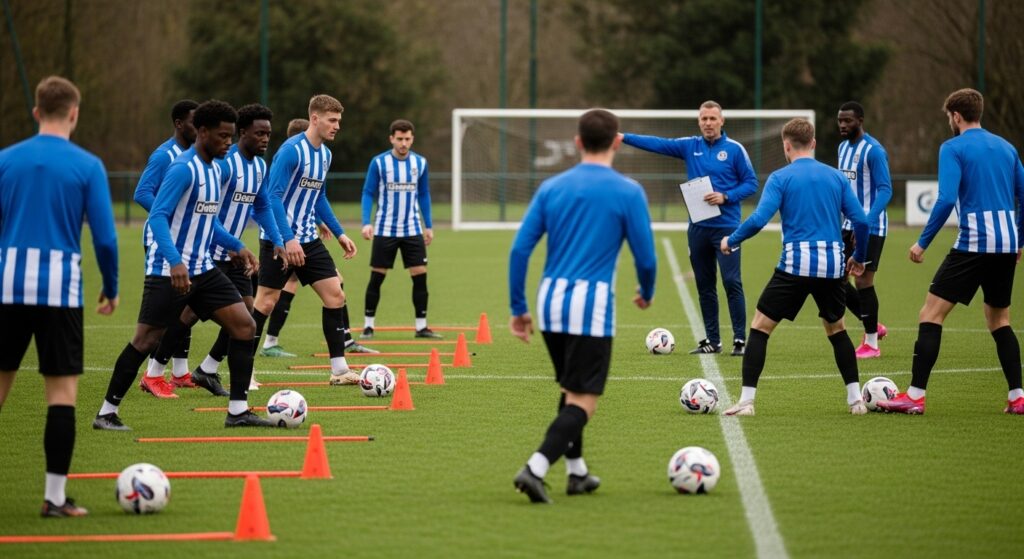
In my experience, you don’t need five playbooks. You need two shapes you can swap mid-game. Teach your captain the hand signal. Rehearse the change on a whistle. Done.
If you want more on how I adapt to opponents and whether the hype matches the scores, I stash results alongside the usual ranting in this August 2025 archive. Yes, I update things. No, I don’t always agree with Past Me.
Small Coaching Tweaks That Fix Big Problems
- Body shape matters: Open to the field, see two options.
- Numbers-up zones: Overload one side, switch fast.
- Coverage behind the ball: Your 6 is your seatbelt.
- Throw-ins are free corners: Have two rehearsed routines.
- Set-piece sanity: One near-post runner every time.
I’ve posted some of my smoother and uglier experiments in the match analysis pile. It’s not all highlights. That’s the point.
Game-Day Rhythms and Player Rotation
I rotate in “micro-shifts” of 4–6 minutes for wide players in pressing shapes, longer for center-backs in 3-3-2. Starters aren’t sacred cows. Fresh wingers press better than tired stars. If you coach alone, use a timer. If you coach with an assistant, use two. And drink water. Coaching sprints count too.
If you’re timing subs around halves and stoppages, my cheat sheet on football game lengths helps me not guess and run out of clock. Learned that one the hard way.
Where It All Leads: Building Smarter Players
For players, the jump from 9-a-side to 11-a-side is about principles. Width. Depth. Triangles. Pressing triggers. If you can teach those inside any shape, the rest is accents. I’ll say it again: pick the shape that fits your kids today, not the one that wins a Twitter argument. And maybe stop calling your 10 “Messi” after one elastico. He’s fine. He’s 12.
If you’re into the “which pro shape maps to this” question, I riff on transitions to 11-a-side in that 4-2-3-1 breakdown. The rhythm is similar, the distances just stretch a bit.
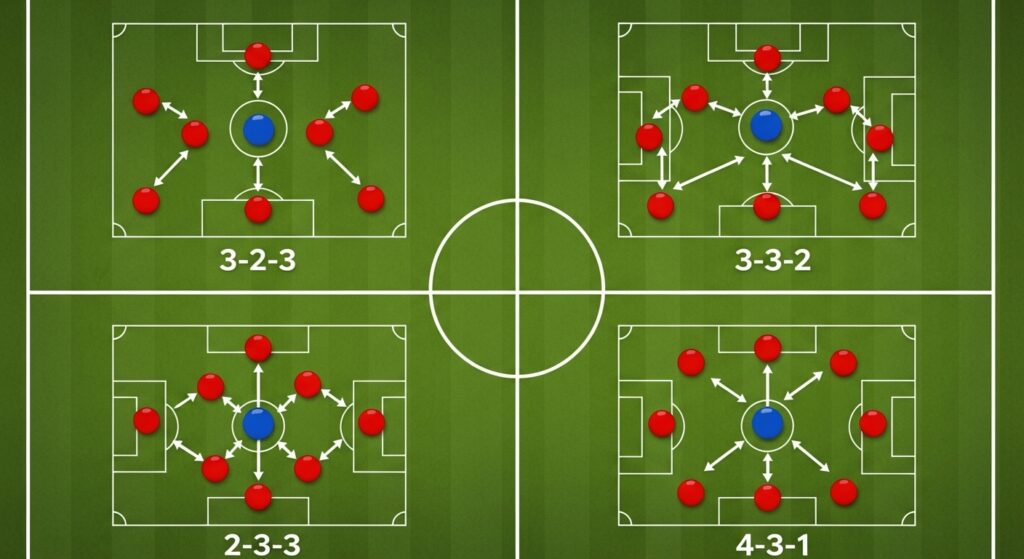
Anyway. I’ve said my piece. Choose a shape, teach the cues, adjust at halftime. I’ll keep scribbling arrows on napkins and pretending it’s art. And yes, I still love geeking out on 9v9 soccer formations when the coffee is strong and the cones are lined up straight.
FAQs About 9v9 Soccer Formations
What’s the “best” shape for beginners?
3-3-2. It’s stable, easy to teach, and keeps you from getting sliced in transition.
How do I stop getting countered all the time?
Keep one mid (the 6) behind the ball on attacks and tuck the weak-side winger inside. That’s your rest defense.
Should my keeper play short or long on goal kicks?
Read the press. If they jump high, go long with runners ready for second balls. If not, play short and switch. No coin flips.
Can I change shape mid-game without chaos?
Yes. Teach one signal and practice the swap in training. Go from 3-2-3 to 2-3-3 by pushing fullbacks higher and sliding the 6.
Is 4-3-1 too defensive for youth soccer?
Not if you use it as a phase, not a lifestyle. It saves legs and buys time vs. strong teams, then you open up.

I’m Daniel Moore, and I live for the thrill of the game. Get energetic live commentary, detailed match analysis, data-backed betting predictions, and official team rankings right here.
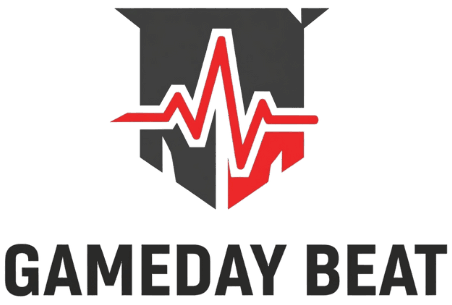
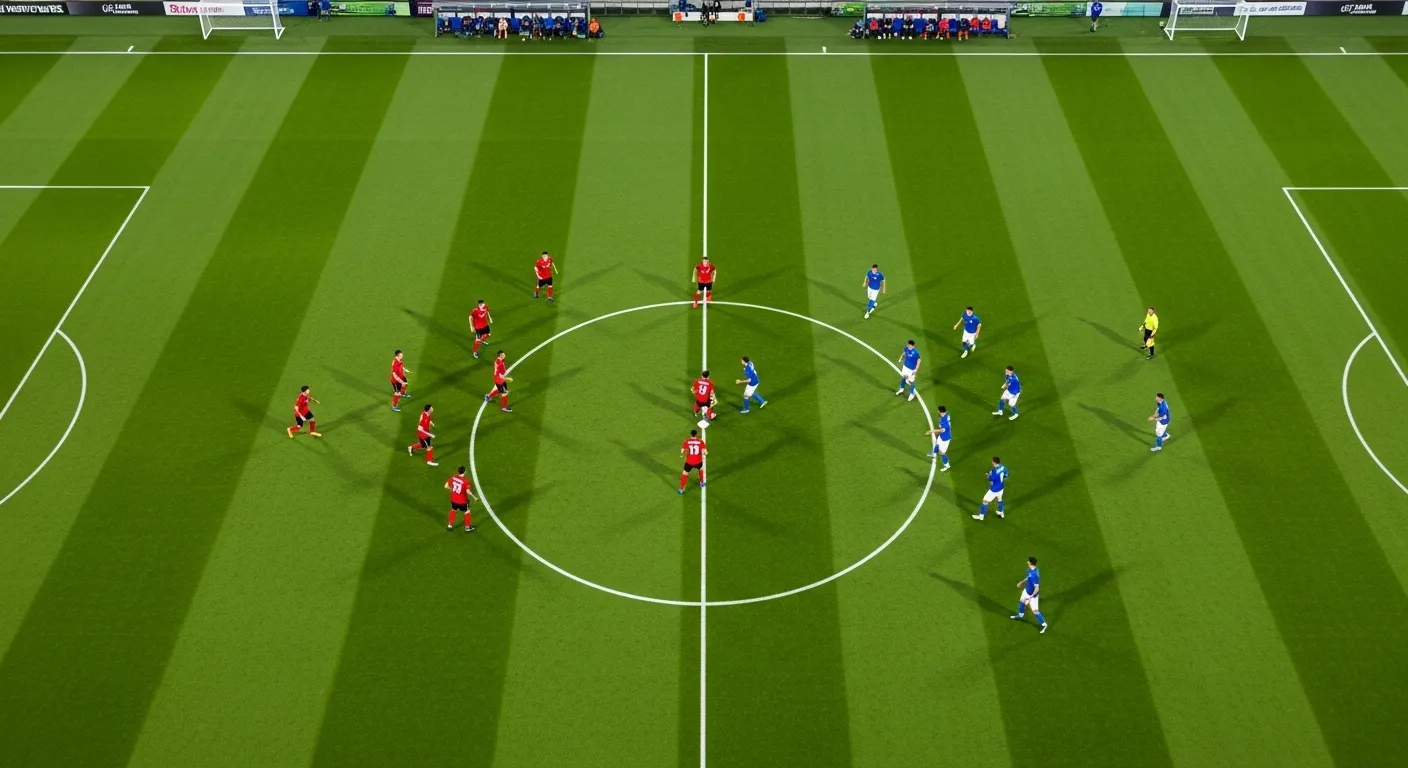
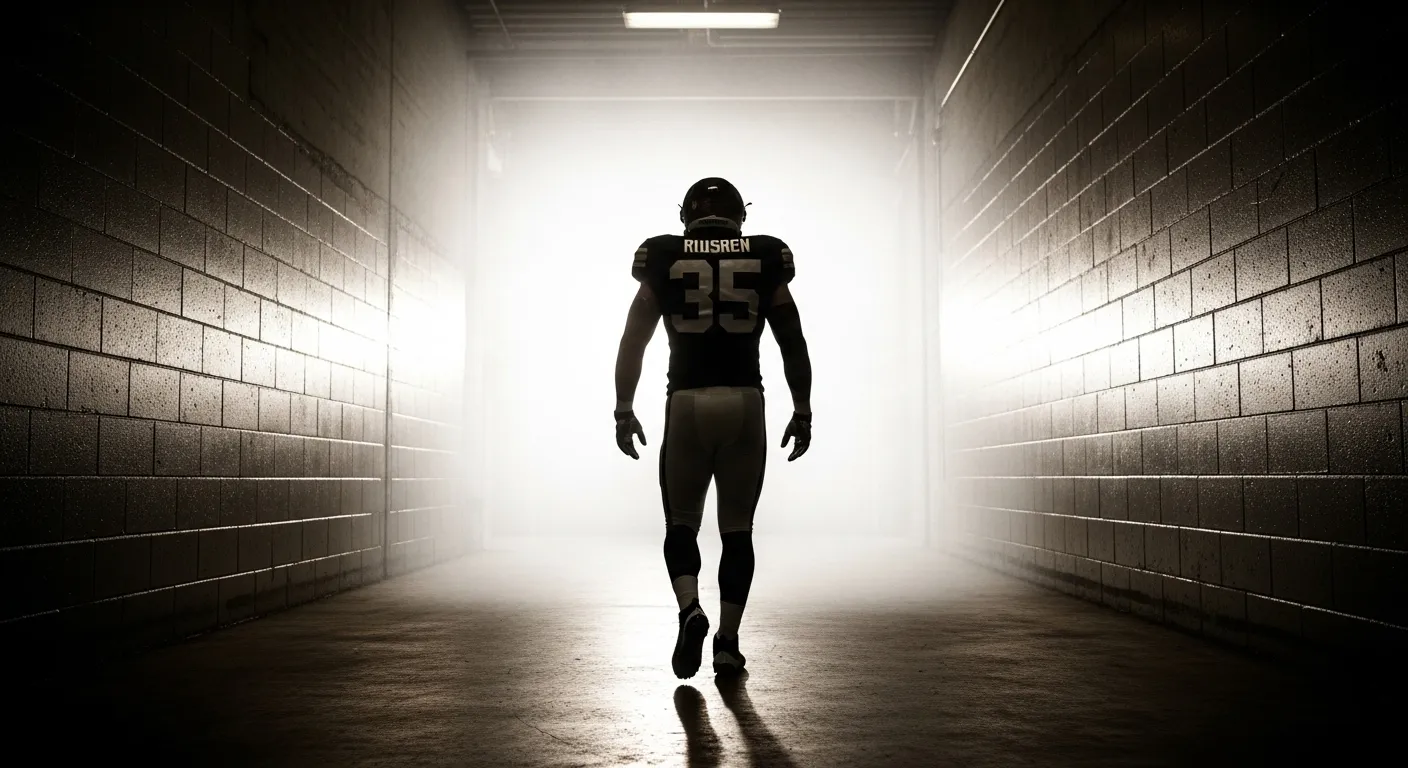
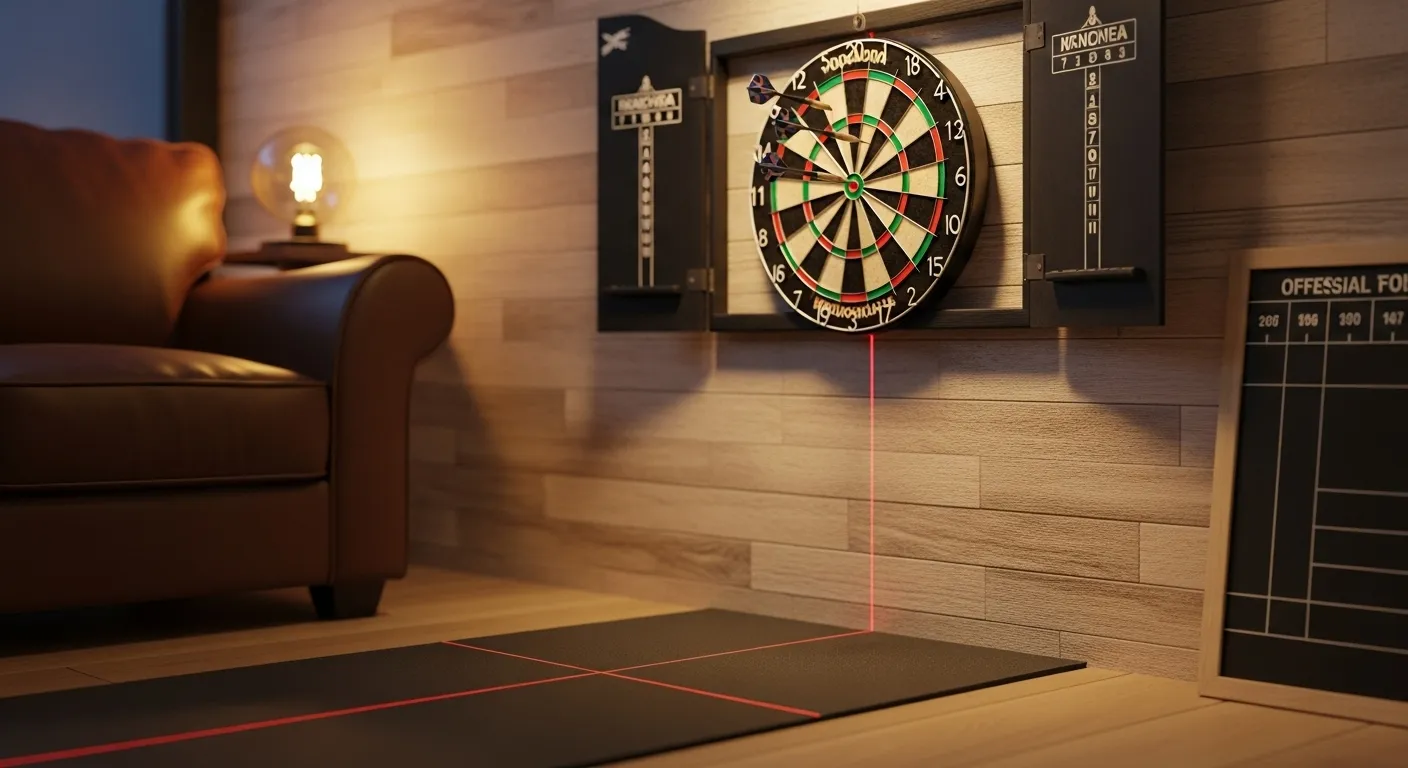
What’s your go-to formation for youth soccer tournaments – the balanced 3-3-2 or the aggressive 2-3-3?